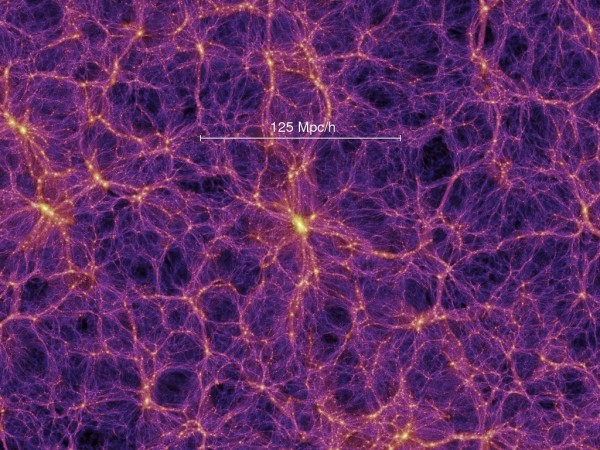
Astronomers believe the earliest universe was nearly uniform as it expanded outward from the Big Bang. By a few billion years after the Big Bang, areas of slightly higher density had evolved to become galaxy clusters and groups, with sparsely populated regions devoid of galaxies in between. The universe as a whole evolved to have a honeycomb-like structure, which astronomers call the cosmic web. The walls of the web are made up of galaxy clusters. Between them are sparsely populated regions devoid of galaxies. There are also thread-like filaments that link the galaxy-rich parts of the web. New work by an international team of researchers – led by astronomers at UC Riverside – suggests that the filaments in the cosmic web played an important role in the universe’s evolution. The Astrophysical Journal published their work on November 20, 2014.
Behnam Darvish is a Ph.D. graduate student in the Department of Physics and Astronomy at UC Riverside. He led the research project and is the first author on the paper. He said in a press release:
We think the cosmic web, dominated by dark matter, formed very early in the history of the universe, starting with small initial fluctuations in the primordial universe.
Such a ‘skeletal’ universe must have played, in principle, a role in galaxy formation and evolution, but this was incredibly hard to study and understand until recently.
The filaments are like bridges connecting the denser regions in the cosmic web. Imagine threads woven into the web.
These researchers found that galaxies residing in the filaments have a much higher chance of actively forming stars. In other words, in the distant universe, galaxy evolution seems to have been accelerated in the filaments. Darvish said:
It is possible that such filaments ‘pre-process’ galaxies, accelerating their evolution while also funneling them towards clusters, where they are fully processed by the dense environment of clusters and likely end up as dead galaxies
Our results also show that such enhancement/acceleration is likely due to galaxy-galaxy interactions in the filaments.
The researchers conducted their project using data from two big cosmological surveys (COSMOS and HiZELS), through which a giant section of the cosmic web was first revealed. They then explored data from several telescopes (Hubble, VLT, UKIRT and Subaru). Finally, they applied a new computational method to identify the filaments.
In this new study, the researchers focused on the distant universe – when the universe was approximately half its present age. Bahram Mobasher – a professor of physics and astronomy at UC Riverside and Darvish’s adviser – said, however:
There is evidence in our local universe that this process in filaments also continues to occur at the present time.
Next, the team plans to extend this study to other epochs in the age of the universe to study the role of the cosmic web and the filaments in galaxy formation and evolution across cosmic time. Sobral said:
This will be a fundamental piece of the puzzle in order to understand how galaxies form and evolve as a whole.
The following video is a simulated flight through the universe, which uses actual data from the Sloan Digital Sky Survey. The dots of light are not stars; instead, they are entire galaxies filled with stars. Notice that the galaxies are clumped together, with relatively empty space – nearly devoid of galaxies – in between.
A flight through the Universe (HD) from Miguel Aragon on Vimeo.
Bottom line: An international team of researchers led by astronomers at UC Riverside has completed a project in which they applied a new computational method to existing data on the large-scale structure of the universe, or “cosmic web.” Their work indicates that the filaments that bridge the denser regions of the web have a much higher chance of actively forming stars. In other words, in the distant universe, galaxy evolution seems to have been accelerated in the filaments.











